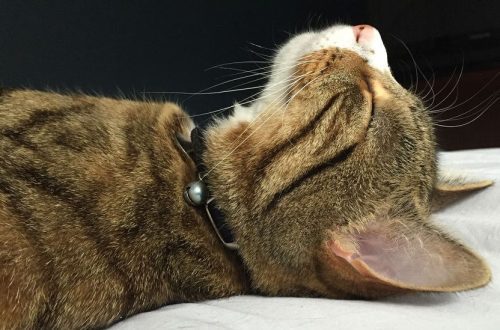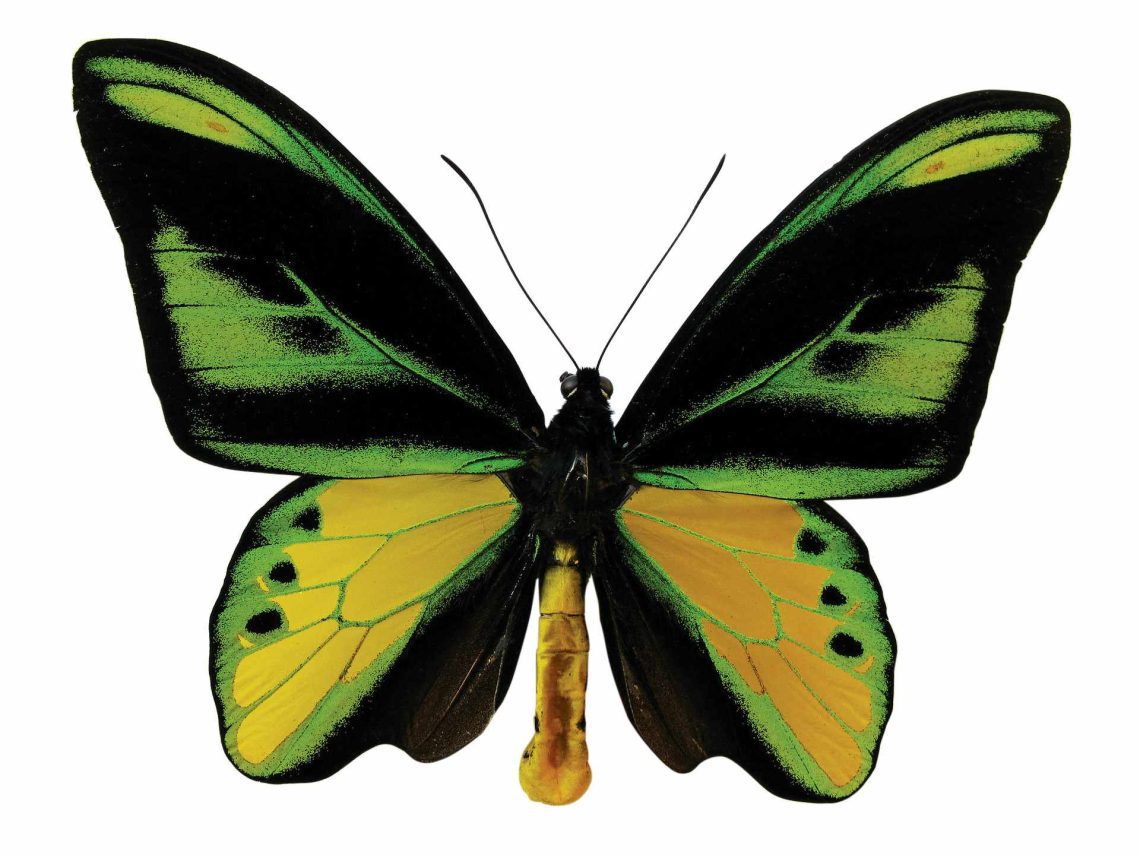
Top 10 biggest butterflies in the world
One of the most numerous orders are butterflies or, as they are also called, Lepidoptera. Word “butterfly” derived from the Proto-Slavic “grandmother” which meant grandmother, old woman. Once upon a time, our ancestors believed that these insects are the souls of dead people.
There are more than 158 species of butterflies, but scientists suggest that almost the same number (up to 100 thousand) are not yet known to science, i.e. many discoveries to be made. Only on the territory of our country live 6 species.
Today we will talk about the largest butterflies in the world, their size, habitat and life expectancy.
Contents
10 Madagascar comet
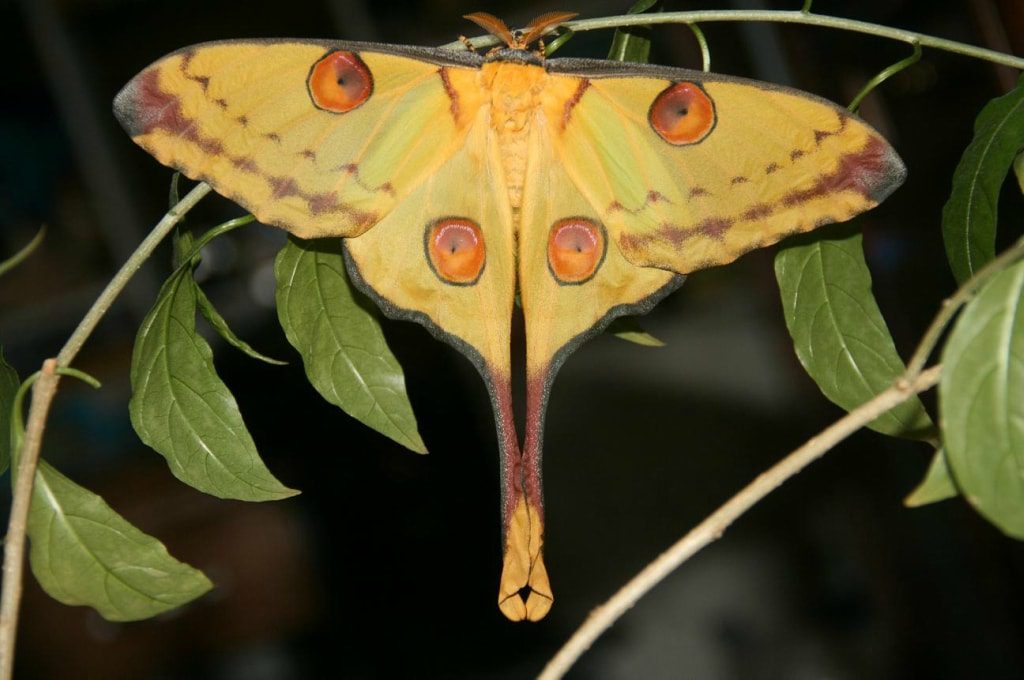 This is a large night butterfly with a wingspan of 140 to 189 mm. Her image can be seen on the money of the state of Madagascar. Females grow especially large, which are more massive and larger than males.
This is a large night butterfly with a wingspan of 140 to 189 mm. Her image can be seen on the money of the state of Madagascar. Females grow especially large, which are more massive and larger than males.
Madagascar comet, as the name implies, lives in the tropical rainforests of Madagascar. It is bright yellow in color, but on the wings there is a brown “eye” with a black dot, as well as brown-black spots on the tops of the wings.
These butterflies do not eat anything and feed on the very nutrients that they accumulated as caterpillars. Therefore, they live only 4-5 days. But the female manages to lay from 120 to 170 eggs. This butterfly species from the peacock-eye family is easy to breed in captivity.
9. Ornithoptera creso
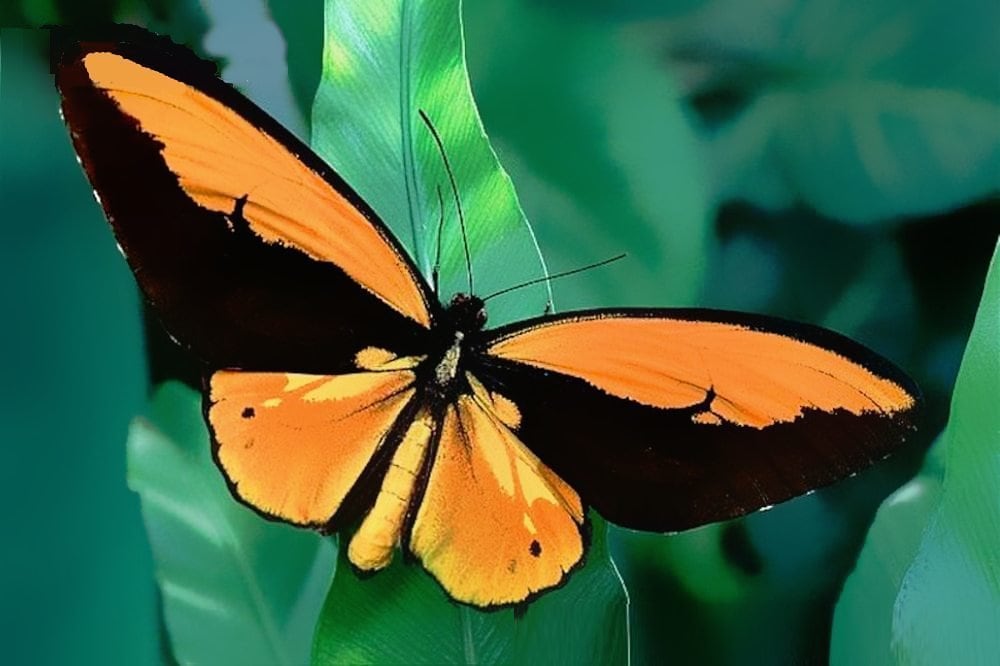 It is a diurnal butterfly belonging to the Sailboat family. It got its name in honor of the king of Lydia – Croesus. She has a significant wingspan: in the male individual – up to 160 mm, and in the larger female – up to 190 mm.
It is a diurnal butterfly belonging to the Sailboat family. It got its name in honor of the king of Lydia – Croesus. She has a significant wingspan: in the male individual – up to 160 mm, and in the larger female – up to 190 mm.
Researchers have repeatedly talked about the extraordinary beauty Ornithoptery cress. Naturalist Alfrel Wallace wrote that her beauty could not be expressed in words. When he was able to catch her, he almost fainted from excitement.
Males are orange-yellow in color, they have black “inserts” on their wings. Under special lighting, it seems that the wings shine greenish-yellow. Females are not so beautiful: brown, with a gray tint, there is an interesting pattern on the wings.
You can meet these butterflies in Indonesia, on the island of Bachan, its subspecies are on some islands of the Moluccas archipelago. Due to deforestation, tropical forests may disappear. They prefer to live in swampy areas.
8. trogonoptera trojan
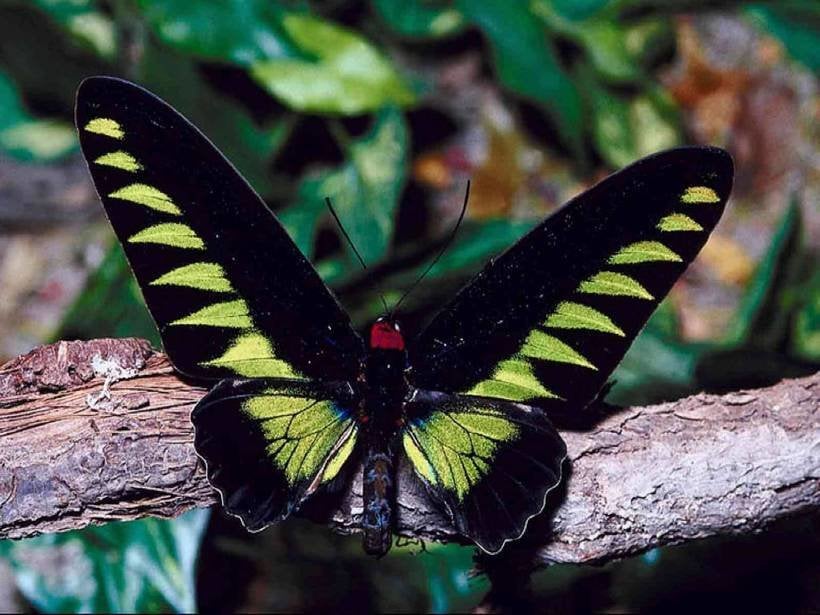 This butterfly also belongs to the Sailboat family. Its name can be translated as “originally from Troy“. The wingspan is from 17 to 19 cm. Females can be the same size as males, or slightly larger.
This butterfly also belongs to the Sailboat family. Its name can be translated as “originally from Troy“. The wingspan is from 17 to 19 cm. Females can be the same size as males, or slightly larger.
In males trogonoptera trojan black velvety wings, in females they are brown. On the front wings of the male there are attractive light green spots. You can meet this beauty on the island of Palawan, in the Philippines. It is endangered, but is bred by collectors in captivity.
7. Troides Hippolyte
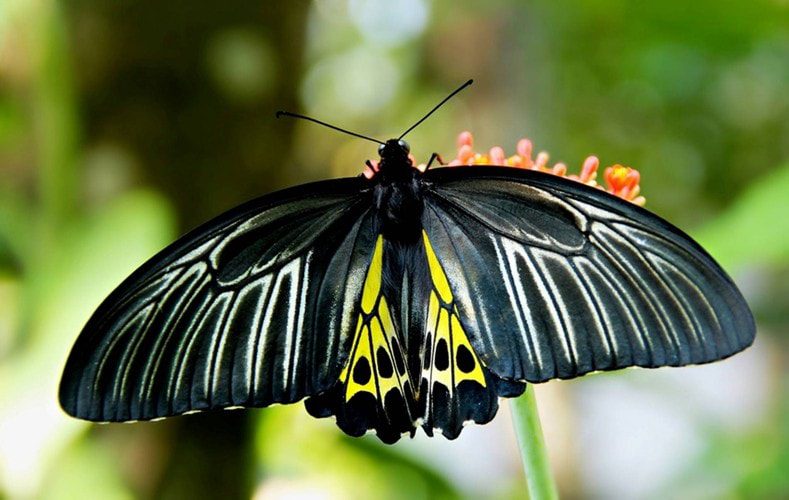 In South Asia, you can also find this large tropical butterfly from the Sailboat family. Most of them have a wingspan of up to 10-15 cm, but there are especially large specimens that grow up to 20 cm. They are black or black-brown in color, can be gray, ashy, with yellow fields on the hind wings. You can find it in the Moluccas.
In South Asia, you can also find this large tropical butterfly from the Sailboat family. Most of them have a wingspan of up to 10-15 cm, but there are especially large specimens that grow up to 20 cm. They are black or black-brown in color, can be gray, ashy, with yellow fields on the hind wings. You can find it in the Moluccas.
The caterpillars of this butterfly feed on the leaves of poisonous kirkazon plants. They themselves eat nectar, hovering over a flower. They have a smooth, but rather fast flight.
Troides Hippolyte avoid dense forests, they can be found on coastal slopes. It is very difficult to catch these majestic butterflies, because. she hides in the crowns of trees, 40 m from the ground. However, the natives who make money on this species of butterflies, having found feeding caterpillars, build huge wattle fences and watch how the caterpillars pupate, and then collect butterflies that have slightly spread their wings.
6. Ornithoptera goliaf
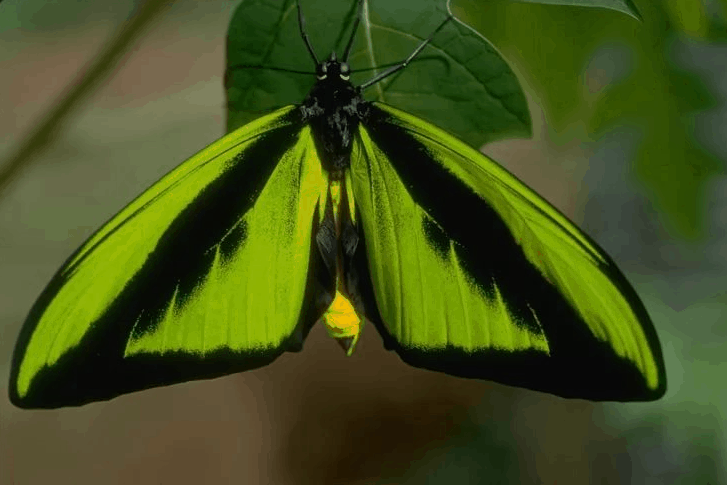 One of the largest butterflies of the Sailboat family is Ornithoptera goliaf. She got her name in honor of the biblical giant Goliath, who once fought with the future king of Israel, David.
One of the largest butterflies of the Sailboat family is Ornithoptera goliaf. She got her name in honor of the biblical giant Goliath, who once fought with the future king of Israel, David.
It can be found in the Moluccas, off the coast of New Guinea. Huge beautiful butterflies, the wingspan of which in males is up to 20 cm, in females – from 22 to 28 cm.
The color of males is yellow, green, black. The females are not so beautiful: they are brownish-brown, with light spots and a gray-yellow border on the lower wings. Butterflies live in tropical forests. They were first discovered in 1888 by the French entomologist Charles Oberthure.
5. Sailboat antimach
 It belongs to the sailboat family. It is considered the largest butterfly in Africa in size, because. found on this continent. It got its name in honor of the elder Antimachus, you can learn about it from the myths of Ancient Greece.
It belongs to the sailboat family. It is considered the largest butterfly in Africa in size, because. found on this continent. It got its name in honor of the elder Antimachus, you can learn about it from the myths of Ancient Greece.
Its wingspan is from 18 to 23 cm, but in some males it can be up to 25 cm. The color is ocher, sometimes orange and red-yellow. There are spots and stripes on the wings.
It was discovered in 1775 by the Englishman Smithman. He sent the male of this butterfly to London, the famous entomologist Drew Drury. He fully described this butterfly, including it in his work “Entomology”, published in 1782.
Sailboat antimach prefers humid tropical forests, males can be found on flowering plants. Females try to stay closer to the tops of trees, very rarely go down or fly out into open spaces. Despite the fact that it is distributed almost throughout Africa, it is quite difficult to meet it.
4. Peacock eye atlas
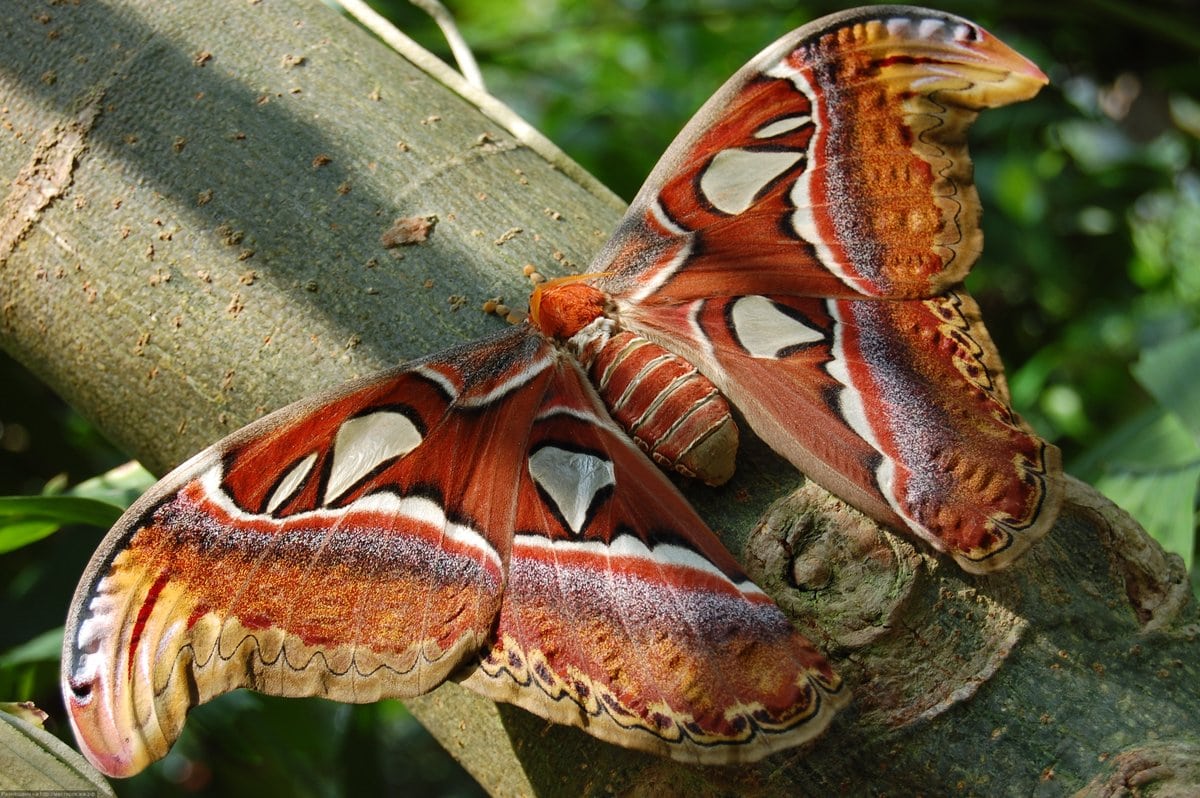 As the name implies, it belongs to the Peacock-eye family. It was named after the hero of Greek mythology – Atlas. According to the legends, he was a titan who held the sky on his shoulders.
As the name implies, it belongs to the Peacock-eye family. It was named after the hero of Greek mythology – Atlas. According to the legends, he was a titan who held the sky on his shoulders.
Peacock eye atlas impresses with its size: the wingspan is up to 25-28 cm. This is a night butterfly. It is brown, red, yellow or pink in color, there are transparent “windows” on the wings. The female is slightly larger than the male. Caterpillars are green, grow up to 10 cm.
Atlas peacock-eye can be found in Southeast Asia, in tropical forests, flying either late in the evening or early in the morning.
3. Peacock-eye hercules
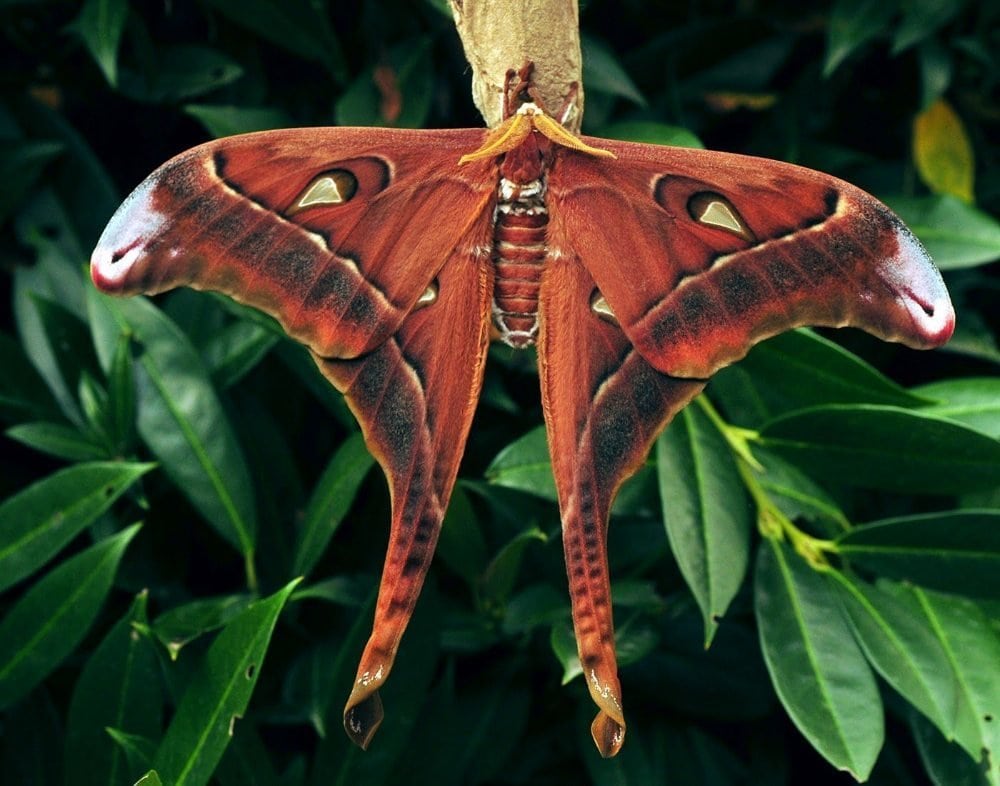 A rare night moth, also belonging to the Peacock-eye family. It is considered the largest in Australia. Its wingspan can be up to 27 cm. It has very large and wide wings, each of which has an “eyed” transparent spot. Especially distinguished by the size of the female.
A rare night moth, also belonging to the Peacock-eye family. It is considered the largest in Australia. Its wingspan can be up to 27 cm. It has very large and wide wings, each of which has an “eyed” transparent spot. Especially distinguished by the size of the female.
It can be found in tropical forests in Australia (in Queensland) or in Papua New Guinea. Peacock-eyed Hercules was first described by the English entomologist William Henry Miskin. This was in 1876. The female lays 80 to 100 eggs, from which bluish-green caterpillars emerge, they can grow up to 10 cm.
2. Queen Alexandra’s Birdwing
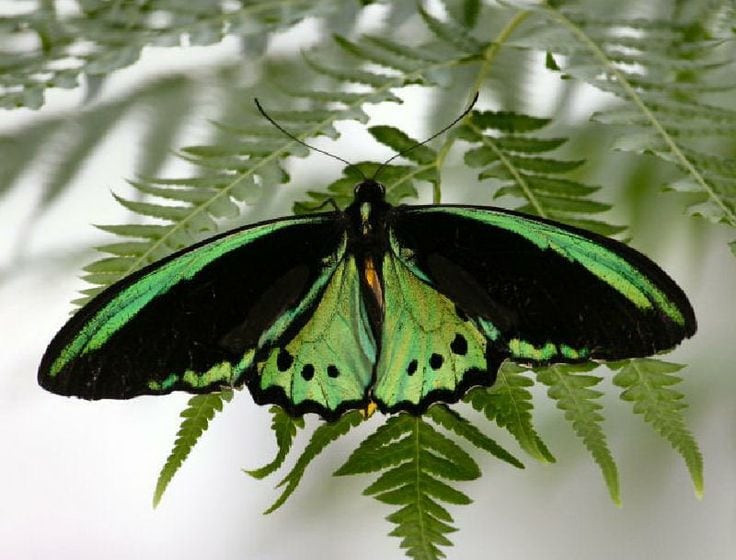 One of the rarest butterflies that almost any collector dreams of. It is a diurnal butterfly from the Sailfish family. Females are slightly larger than males, their wingspan is up to 27 cm. The London Museum of Natural History has a specimen with a wingspan of 273 mm.
One of the rarest butterflies that almost any collector dreams of. It is a diurnal butterfly from the Sailfish family. Females are slightly larger than males, their wingspan is up to 27 cm. The London Museum of Natural History has a specimen with a wingspan of 273 mm.
Queen Alexandra’s birdwings weigh up to 12 g. The wings are dark brown with a white, yellowish or cream tinge. Males are slightly smaller, their wingspan is up to 20 cm, blue and green. Caterpillars – up to 12 cm in length, their thickness – 3 cm.
You can meet this species of butterfly in New Guinea, in tropical rainforests. Became a rarity, tk. in 1951, the eruption of Mount Lamington destroyed a large area of their natural habitat. Now it cannot be caught and sold.
1. Tizania agrippina
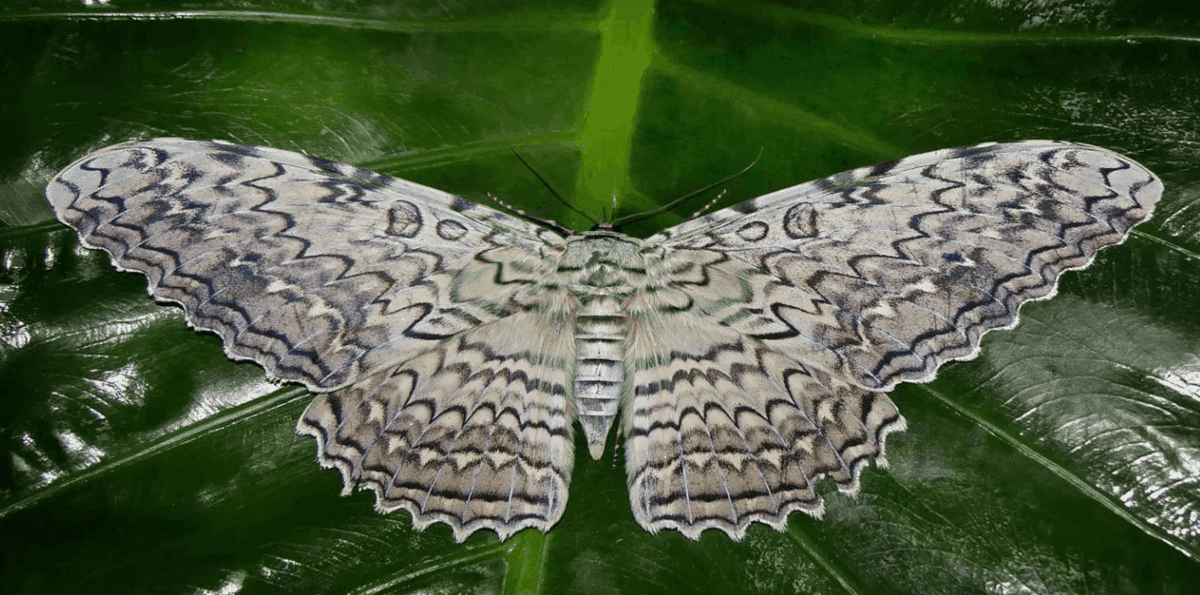 A large night butterfly, impressive in its size. Tizania agrippina white or grayish in color, but its wings are covered with a beautiful pattern. The underside of the wings is dark brown with whitish spots, while in males it is blue with a purple tint.
A large night butterfly, impressive in its size. Tizania agrippina white or grayish in color, but its wings are covered with a beautiful pattern. The underside of the wings is dark brown with whitish spots, while in males it is blue with a purple tint.
Its wingspan is from 25 to 31 cm, but according to other sources, it does not exceed 27-28 cm. It is common in America and Mexico.



